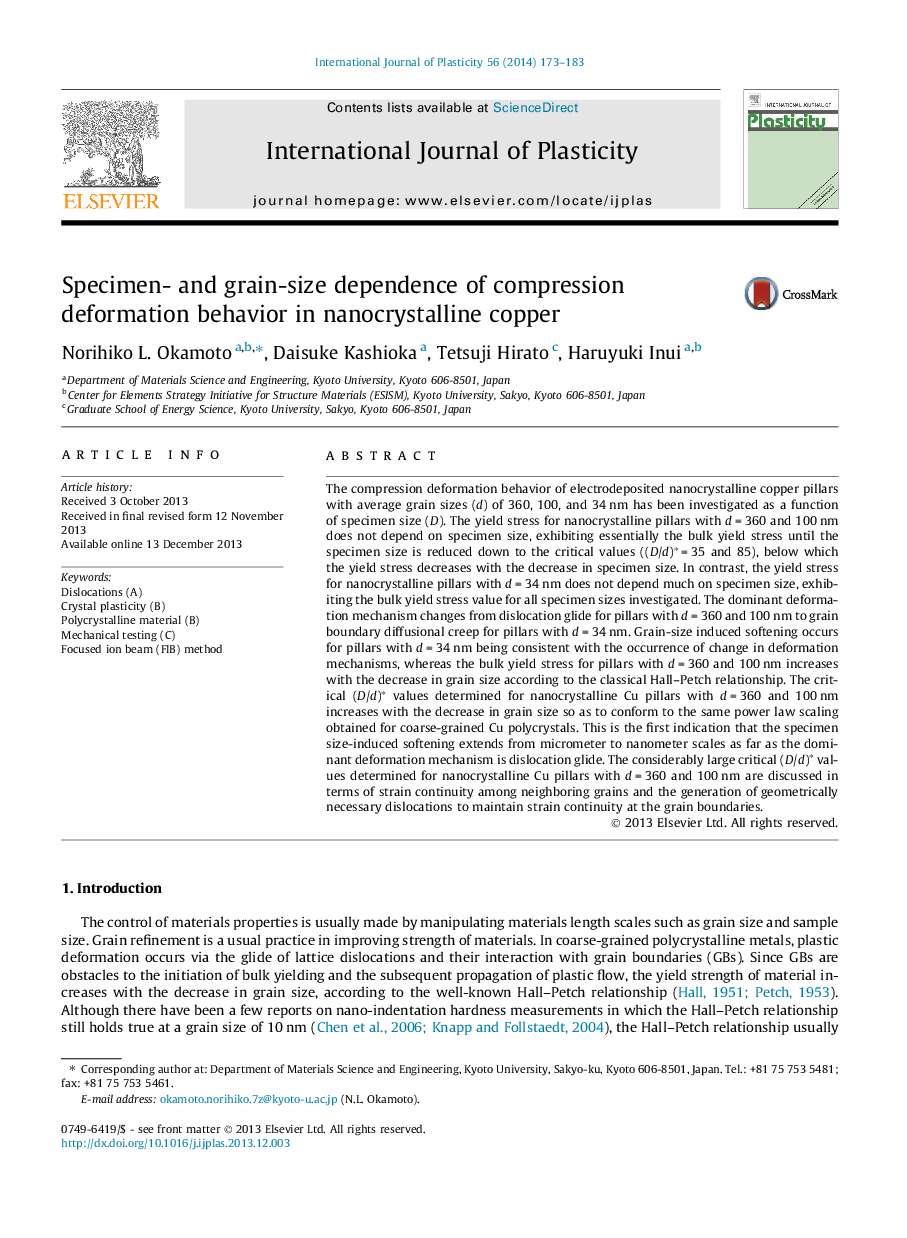| Article ID | Journal | Published Year | Pages | File Type |
|---|---|---|---|---|
| 784398 | International Journal of Plasticity | 2014 | 11 Pages |
•Nanocrystalline Cu with grain sizes (d) of 360, 100, and 34 nm was electrodeposited.•Compression deformation behavior of nanocrystalline Cu pillars was investigated.•The yield stress for Cu pillars (d ⩾ 100 nm) lessons with decreasing specimen size.•The yield stress for Cu pillars (d = 34 nm) does not depend much on specimen size.•Grain-size induced softening occurs for Cu pillars with d = 34 nm.
The compression deformation behavior of electrodeposited nanocrystalline copper pillars with average grain sizes (d) of 360, 100, and 34 nm has been investigated as a function of specimen size (D). The yield stress for nanocrystalline pillars with d = 360 and 100 nm does not depend on specimen size, exhibiting essentially the bulk yield stress until the specimen size is reduced down to the critical values ((D/d)∗ = 35 and 85), below which the yield stress decreases with the decrease in specimen size. In contrast, the yield stress for nanocrystalline pillars with d = 34 nm does not depend much on specimen size, exhibiting the bulk yield stress value for all specimen sizes investigated. The dominant deformation mechanism changes from dislocation glide for pillars with d = 360 and 100 nm to grain boundary diffusional creep for pillars with d = 34 nm. Grain-size induced softening occurs for pillars with d = 34 nm being consistent with the occurrence of change in deformation mechanisms, whereas the bulk yield stress for pillars with d = 360 and 100 nm increases with the decrease in grain size according to the classical Hall–Petch relationship. The critical (D/d)∗ values determined for nanocrystalline Cu pillars with d = 360 and 100 nm increases with the decrease in grain size so as to conform to the same power law scaling obtained for coarse-grained Cu polycrystals. This is the first indication that the specimen size-induced softening extends from micrometer to nanometer scales as far as the dominant deformation mechanism is dislocation glide. The considerably large critical (D/d)∗ values determined for nanocrystalline Cu pillars with d = 360 and 100 nm are discussed in terms of strain continuity among neighboring grains and the generation of geometrically necessary dislocations to maintain strain continuity at the grain boundaries.
Graphical abstractFigure optionsDownload full-size imageDownload as PowerPoint slide
